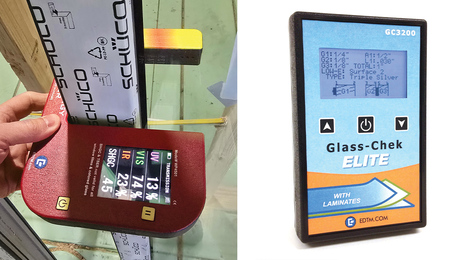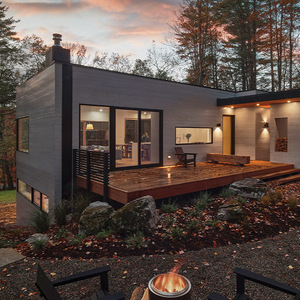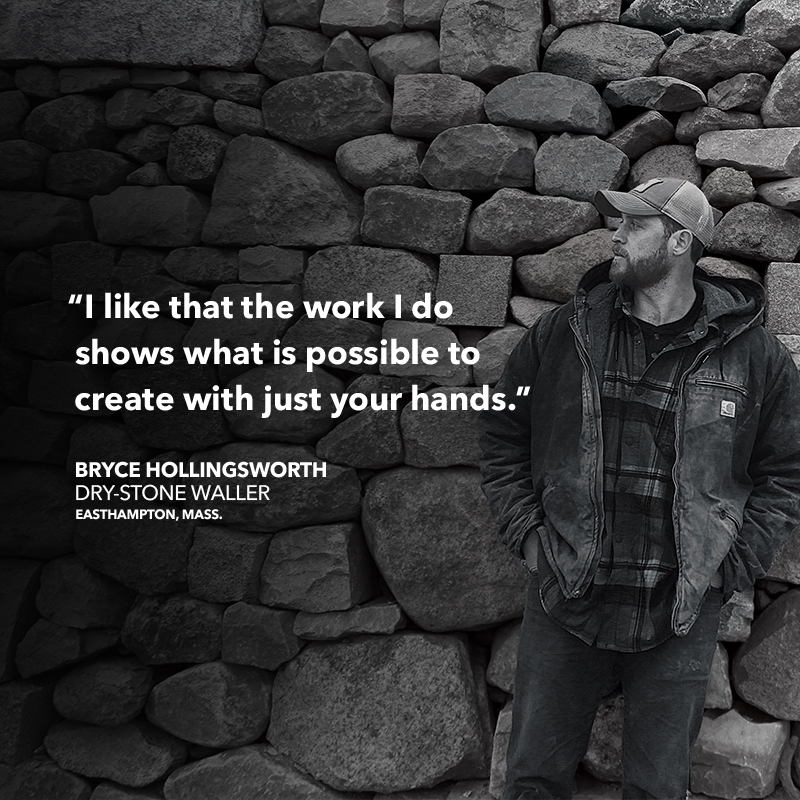*
I am a homeowner. Our contractor is installing a new bath, and we are trying to match the existing elevation, so we can get away without a huge (1″) elevation gain between the tile and the finish floor in the adjacent room. It would be nice not to have a clunky threshold.
To accomplish this, my contractor wants to remove the existing finish floor and subfloor in the new bath during the rough out and put 2×4 blocking between the floor joists, and put a 3/4 or thicker subfloor on the blocking so the top of the subfloor will be even with the floor joists, and lay wonder board over that. Although the mortar base would be thicker than I would like, I could be talked into a mortar base if it would be better. He will charge me extra for the mortar base. The tile will be 1″ hex tile in 12″x24 sheets.
He claims that this subloor system will work. I’d love a floor that is even with the adjacent finish floor, but do want to avoid stress cracks.
My specific questions are:
1. Will that type of “sunken” subfloor work? If so, what thickness should the plywood be?
2. If that sunken subfloor is OK, would you guys recommend wonder board with that application or a mortar bed?
Thanks in advance for all who respond.



















Replies
*
Tom, is the subfloor in the bath already above that of the adjacent floor? Even if you went with 1/2" wonderboard and 1/4" tile, you'd still be only 3/4" above the subfloor in the adjacent floor. Even with vinyl as the adjacent finish floor, you'd be +/- 1/4" elevation at the threshold. This is assuming that the subfloor in both rooms are the same in elevation.
If this is the case, using 1/4" hardibacker would solve the problem.
If this is not the case, I'd suggest you talk to an architect.
*
Tom, About year ago I had a similar situation for a customer. Taking a cue from an old FHB article, I removed all layers of flooring down to the joists. Then I installed 2x4 ledgers along both edges of each joist 3/4" below the top edge. 3/4" thick plywood was then installed between each joist on top of the ledgers and flush with the top of the joists. A second layer of 3/4" plywood was then glued and nailed over the first layer. The tiler installed 1/2" thick by 12" square tiles in the new mudroom. He installed 1/4" thick by 1" hex tiles in the new bathroom. The cement board was 1/4" thick under the thick tiles and 1/2" thick under the thinner tiles for a total thickness of 3/4". This left both tile floors and the existing adjacent kitchen floor all flush with each other.
Steve
*
The method that you describe for dropping the sub-floor is quite common here in the winter wonderland. We typically use the same material (3/4" t&g) for the dropped portion.
In my early years of framing, we always used 1/2" cdx ply for the subfloor. In carpeted areas, the floor was laminated with 5/8" underlayment. In the tile areas a mud base was installed,
"Mortar bed" is an incorrect term. Mortar is not used in a ceramic tile floor system.
I prefer the cement mudbase. I have doubts about the seams in the "wonderboard" method. It probably works fine in small areas such as a bath, 1/2 bath etc. I'd be leery with larger tiles.
Go with the mudbase and the dropped method. I'll guarantee it!
Blue
*Given the work involved, is lowering the floor to the joists a worthwhile activity for the look achieved? In my own case, the kitchen tile is higher than the adjacent dining room t&g hardwood. The wooden threshold, however, is a wide ramp, giving the optical illusion of less rise. Sort of the same principle of stepped ramping a magician uses for a false floor in cage bases to make the base appear thinner than it is.
*
yeah, Barry.
The extra work ( which isn't all that difficult) is well worth it. flush floors are an indication of the level of skill and planning in a job, and ramps only highlight the fact that there is a difference in levels, maybe somebody screwed up.
Tom, wonderboard is great stuff, never seen a problem with it that wouldnt be the same even if you had a mud base, but you can't level a floor with it. Blue's got it right, use a minimum of 3/4" ply for the subfloor.
Learnin' from the old guys in MI . ,
Carp.
*Hey Blue"cement" base is not the correct term either.Cement is only the bonding agent that holds the aggregate mess together. Maybe mortar is the correcter term!Carp
*
Someone posted the idea of setting cement board with thinset and screws...That's my choice if the floor is level, that is. a morter/concrete/cement base has also worked for thousands of years...Whatever one's skills are and exact jobsite particulars...etc...
Jack : )
*Brain fart! I stand corrected!Of course the correct term is a concrete base. I probably got caught up in the "cementboard" thing.Notice my blushing face!Blue
*I tend to agree with you Barry. 1/4" sounds to me like "close enough"!I got over my perfectionism many years ago and am a lot happier!In my current house, I had to overcome a 3/4" difference when I installed ceramic over the kitchen. No way was I going to tear out and scab all those joist (for free!)I laid a tear drop oak casing for the transition, and it looks great! In fact, I actually prefer the look! There are many ways to skin a cat, and many ways to make a hard job harder!Personally I take the easy way when customer allows it. And when customer doesn't allow it, I find another customer! I just figure that we're not compatible, and neither will be happy at the job's end anyway!Blue, laughing all the way to the bank!
*
Barry,
It is if the customer is willing to pay for it.
Steve
*Carp,I agree. Planning and execution are what puts "FINE" in FHB. If the customer is perfectionistic enough to pay for it, I like to do this level of building. Just wish they were all that way.Steve
*
What do the fine home builders do in a year or two when the fresh carpet gets broken down a little bit, and ends up lower than the tile? It seems that a 1/4 " one way or another is always imminent.
What if the lady of the house selects a shag carpet, or a tight weave?
It seems that the "perfectionists" are going to tear their hair out, one way or another!
still fully cropped,
*
I've seen several places where it's been suggested that the cement board be "glued" down (either thinset or construction adhesive) as well as screwed down?
How important is the adhesive?
I've got a relatively small area, about 60" x 60", and I didn't use any adhesive, just screws. Before I lay tile, should I rip it out and do it over?
None of the suggestions I've seen have said why the adhesive is important.
Thanks!
*Blue, No carpet here. This allowed the new tile to be flush with the existing (70y.o.) tile in the kitchen which is flush with the hardwood flooring in the dining room. The 2 doors that connect the 3 rooms are clustered near each other in a corner of the kitchen. The smooth transitions were important to the homeowner. So he was willing to pay for it.b Whatever Pays, Steve B
*
You avoided the question.
*
Blue,
I didn't avoid your question. I ignored it's irrelevence to my situation. Adjacent floors of tile and hardwood are not carpet in any sense of the word that I understand.
If you were to ask me what I thought about your proposed situation with tile and carpet: Sure, close enough. But shag? It sounds like a replacement for all that torn out hair. LOL
SteveB
*
I am a homeowner. Our contractor is installing a new bath, and we are trying to match the existing elevation, so we can get away without a huge (1") elevation gain between the tile and the finish floor in the adjacent room. It would be nice not to have a clunky threshold.
To accomplish this, my contractor wants to remove the existing finish floor and subfloor in the new bath during the rough out and put 2x4 blocking between the floor joists, and put a 3/4 or thicker subfloor on the blocking so the top of the subfloor will be even with the floor joists, and lay wonder board over that. Although the mortar base would be thicker than I would like, I could be talked into a mortar base if it would be better. He will charge me extra for the mortar base. The tile will be 1" hex tile in 12"x24 sheets.
He claims that this subloor system will work. I'd love a floor that is even with the adjacent finish floor, but do want to avoid stress cracks.
My specific questions are:
1. Will that type of "sunken" subfloor work? If so, what thickness should the plywood be?
2. If that sunken subfloor is OK, would you guys recommend wonder board with that application or a mortar bed?
Thanks in advance for all who respond.